Risk Analysis
ORION Risk Analysis provides software tools to
permit a different and much more comprehensive approach to the analysis of risk and a new
level of interactivity with the analysis.
Risk Analysis requires the manipulation of
tentative information to assess the potential impact of changes to the environment. Some
of the tentative information has either been kept in people's heads or has been linearised
away because there was no way for the normal financial analysis techniques to handle
tentative information about the structure of the bank’s book.
These new analysis tools are designed to handle
structural variability in the same way as all other variability in the portfolio, greatly
increasing the effectiveness of the analysis.
The system is well suited to graphical
interaction by financial specialists, as all elements of the analysis including its logic
have a simple intuitive visual representation. The topology of the multi-dimensional risk
landscape can be visualised more easily, because the logic that defines it is actualised.
The Risk Analysis tools sit on top of the ORION
Knowledge Network system, providing a direct representation of analytic language elements
without the mysteries of programming a computer. The structure of the analysis allows for
extensibility at any level at any time.
Why a Different Approach
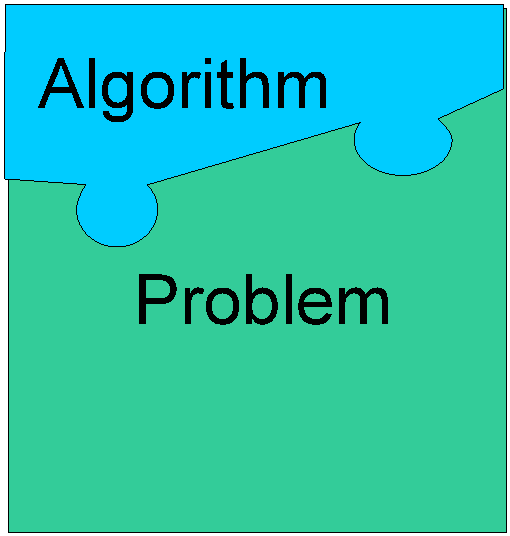 The
currently available Risk Analysis tools are based around an algorithmic approach to risk
assessment. This was fine while products were simple - the algorithm was simple and
stable, and increasing the volume alone made no difference to the calculation. As products
have become increasingly complex, hooking into the bank's environment through sensitivity
to interest rate or FX rates, the algorithm operating on simple product data has been
increasingly poor at predicting the real risk regime for the bank.
The
currently available Risk Analysis tools are based around an algorithmic approach to risk
assessment. This was fine while products were simple - the algorithm was simple and
stable, and increasing the volume alone made no difference to the calculation. As products
have become increasingly complex, hooking into the bank's environment through sensitivity
to interest rate or FX rates, the algorithm operating on simple product data has been
increasingly poor at predicting the real risk regime for the bank.
An algorithm, operating in a similar manner to a spreadsheet, requires
singular values and a well-defined order of computation, which becomes snarled if there is
logical switching inside the calculation. These restrictions make it difficult to
represent the risks inherent in complex products in an undirected way, and to determine
the timing of events, when the timing must be specified for the analysis to proceed. The
requirement that only singular values can be handled makes it impossible to evaluate a
spectrum of interacting risk scenarios simultaneously.
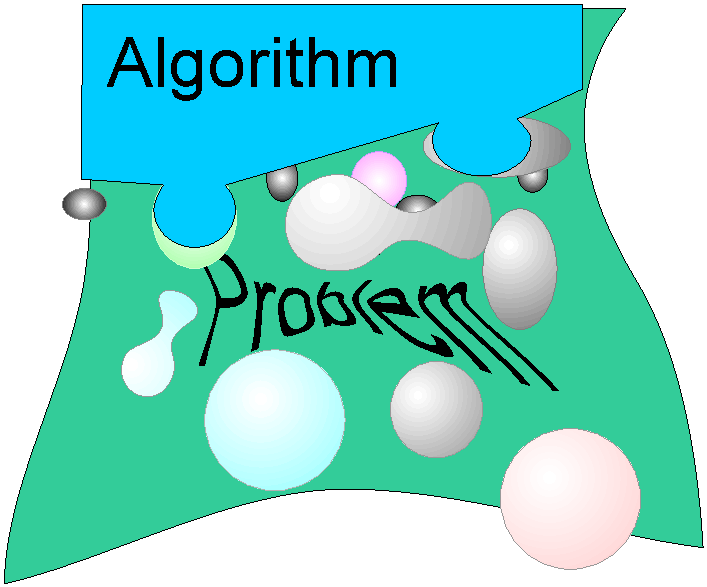 There
have been efforts to improve the operation of Risk Analysis, with special programs
attempting to break the restrictions of a cell-based, fixed topology approach, but the
special programs themselves are inflexible, not capable of any analysis outside of the
programmer’s original conception. Expert Systems have been built for the purpose,
attempting to capture the human analyst’s expertise in a rigid set of rules, only to
find that the human behaves non-algorithmically in complex analysis like this, so no
simplistic and directed set of rules is possible.
There
have been efforts to improve the operation of Risk Analysis, with special programs
attempting to break the restrictions of a cell-based, fixed topology approach, but the
special programs themselves are inflexible, not capable of any analysis outside of the
programmer’s original conception. Expert Systems have been built for the purpose,
attempting to capture the human analyst’s expertise in a rigid set of rules, only to
find that the human behaves non-algorithmically in complex analysis like this, so no
simplistic and directed set of rules is possible.
At some point, a crossover to a non-algorithmic approach is required,
where assembly of the financial instruments and the logic contained within them creates
the mechanism for analysis of the risk. This way, as new and more complex products are
introduced, the analysis changes to handle the complexity, rather than having a programmer
scramble to make sense of how the logic in the product will alter the operation of the
algorithm. Not only are the products complex in themselves, but the overall risk exposure
keeps changing as new products deliberately expose new areas of the bank’s operation
to outside influences. A significant weakness of rigid cell-based risk analysis is the
need to spell out everything in precise detail - unrealistic in a live portfolio where
developments unfold and unintended consequences occur as you go along.
ORION Risk Analysis uses a Constraint Reasoning technique (CRM for
short) to allow a much more realistic description of the risk management problem. There is
no rigid structure into which the analysis needs to be forced. Instead, there is a model
of the holding where every element can be relatively fluid - when things are bought and
sold, whether options will be exercised, drift in interest rates, risk tolerance. Most
financial instruments are special in some way - the special features can be easily added
to the model, not relying on twisting some parameters to get the right effect, or worse,
chopping off inconvenient parts of the problem.
How Much is Different?
 The
basis of the risk analysis is the description of an instrument, with a potential start
time, possible limited holding time, risk allocation and funds usage. A significant
difference from the programmatic approach becomes apparent when values are specified for
these things. Ranges of values are used, and logical connections can be added between any
of the elements of the analysis. This allows the analysis to be simple where simplicity is
appropriate (we always hold 10% in Government Bonds), and complex where necessary to
describe the real situation (if we try to move the market alone...). The CRM analysis
extends to cover much more of the total risk analysis function, analysis that up to now
was done on paper or in people's heads. It is the greater coverage that allows better
information to be available from working on and developing the analysis.
The
basis of the risk analysis is the description of an instrument, with a potential start
time, possible limited holding time, risk allocation and funds usage. A significant
difference from the programmatic approach becomes apparent when values are specified for
these things. Ranges of values are used, and logical connections can be added between any
of the elements of the analysis. This allows the analysis to be simple where simplicity is
appropriate (we always hold 10% in Government Bonds), and complex where necessary to
describe the real situation (if we try to move the market alone...). The CRM analysis
extends to cover much more of the total risk analysis function, analysis that up to now
was done on paper or in people's heads. It is the greater coverage that allows better
information to be available from working on and developing the analysis.
The CRM analysis moves away from the notion of separated rules
and data, adequate for simple transactions, towards the concept of knowledge about a
position, based on the constraints provided by the instruments interacting with the
constraints provided by the bank and its environment. There is not one view of the
bank’s position expressed in an algorithmic summation of risk and return, but many
views, each with relevance and priority.
With the greater expressive power of CRM, it becomes worthwhile to
explore the real constraints on the organisation, and include them in the analysis as well
as the prudential ones. These constraints, management time, management expertise,
management control response time, up to now have stayed in people’s heads, and their
judgements have been used to weed out inappropriate choices, and some appropriate ones,
given the lack of formalisation.
 Some
Constraint Reasoning tools can only move from one consistent state to another. This would
be fairly useless for Risk Analysis, unless the analysis is never needed. As the analysis
rolls along, you will occasionally need to dig your institution out of a hole with changed
risk or market profiles, or other change inconsistent with what has gone before. ORION
will support the decision-making needed to determine what new state you should move to,
and then maintain Constraint Reasoning on that new state.
Some
Constraint Reasoning tools can only move from one consistent state to another. This would
be fairly useless for Risk Analysis, unless the analysis is never needed. As the analysis
rolls along, you will occasionally need to dig your institution out of a hole with changed
risk or market profiles, or other change inconsistent with what has gone before. ORION
will support the decision-making needed to determine what new state you should move to,
and then maintain Constraint Reasoning on that new state.
The Environment For Analysis
The environment that a knowledge network system can provide is
exceptionally flexible, because all of the knowledge about the present and future
portfolio is continually "live", and can interact with the user, as well as grow
and change with user interaction. The realisation of the constraint logic affords the
analyst an excellent view into a multi-dimensional risk space. The agglomeration of risk
is not a simple calculation, so the more the analyst can visualise the overall topology of
the risk "landscape", the better the understanding of the actual risk exposure.
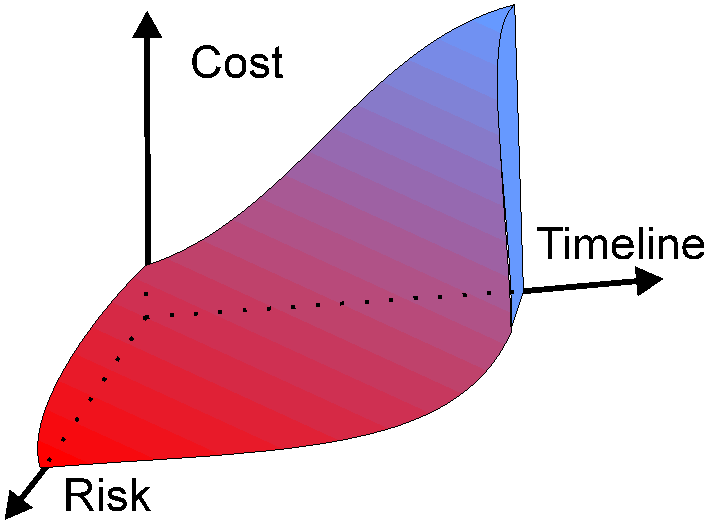 The
user has several graphical interfaces available to work on the analysis, the main one
being a chart of the elements of the portfolio, coupled with plots of the various risk
exposures, from the lowest to the highest levels, together with portfolio limits. Behind
the plots is a knowledge network. It represents the complete logical structure of the
portfolio, incorporating all the elements, costs, risks, flows, constraints and
opportunities that are in the analysis. The network is carrying tentative information
through its connections, and the connections themselves can change as the tentative
information changes.
The
user has several graphical interfaces available to work on the analysis, the main one
being a chart of the elements of the portfolio, coupled with plots of the various risk
exposures, from the lowest to the highest levels, together with portfolio limits. Behind
the plots is a knowledge network. It represents the complete logical structure of the
portfolio, incorporating all the elements, costs, risks, flows, constraints and
opportunities that are in the analysis. The network is carrying tentative information
through its connections, and the connections themselves can change as the tentative
information changes.
Using the tools provided with the plot/chart interface, the analyst can
push the elements of the portfolio around, change percentage limits on groupings, or add,
remove or soften risk limits anywhere in the projected period, or switch alternative
possibilities on and off.
After each user action, information flows through the network structure
changed as a result of the action. The chart and plots of cashflow and risk are updated to
represent the new state of the network, describing current and future states of the
portfolio. If a logical error, or inconsistency, is encountered while updating the
knowledge network, the user can examine the site of the inconsistency, work out ways of
avoiding the problem, and the portfolio then reverts to the previous state. A user can see
a list of the changes they have made, undo any of the changes, all of the details of the
analysis reverting to the state before the change.
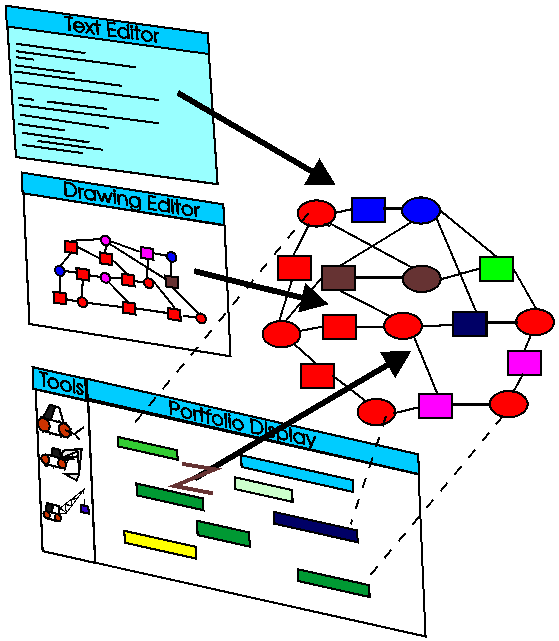 The analytic model, continually updated by back office analysts to reflect the bank’s
environment, acts as a continuous check on front office activity, without the numbing
dullness of a pre-programmed risk limiting algorithm.
The analytic model, continually updated by back office analysts to reflect the bank’s
environment, acts as a continuous check on front office activity, without the numbing
dullness of a pre-programmed risk limiting algorithm.
Automatic analysis of the risk portfolio within the projected
environment is not being done through a clever algorithm operating on the incoming data,
but instead is using the structure of the knowledge network, and allowing the interaction
of the constraints, the cash and risk flows, and any other logic the analyst has implanted
in the network. The analyser can be interrupted, and changes made, even new constraints
added to drive it in a particular direction. This ability, to interact with the user while
in the middle of its analysis, comes from the knowledge about the portfolio being
expressed in a network of operators, instead of in a stack of procedure calls in a
programmed algorithm.
The graphical tools provided for manipulating the portfolio are used to
add new constraints to the network, but they are limited to simple constraints. To add
more complex constraints or new alternative ways of doing things, the Drawing Editor or
the Text Editor can be used. Either of these tools allows the analyst to connect as many
nodes in the network as desired, using simple or complex logic.
Using the ORION Risk Analysis System
The risk analysis network that you build using Constraint Reasoning has
many more uses than a spreadsheet or financial model. The network can be made to behave
much more like the real portfolio, and can be used as a simulation model to determine the
response of the overall portfolio to various effects, decisions, failures. Some of the
uses:
You can switch alternatives on and off manually, and observe the effect
on the portfolio risk and cost, or run the Automatic Analyser to find a viable constraint
limited portfolio for any combination of events you have set up.
You can automate the switching on and off of alternatives, allowing the
system to find a best return/lowest risk solution, where you have set up risk profiles,
interest rate projections and other economic profiles.
You can put in cost functions instead of hard constraint limits, so the
Automatic Analyser can trade return for risk, and find the highest return/lowest risk
portfolio within constraints slightly different to those currently in place.
If something goes wrong with risk control, the risk analysis model can
support "planning under pressure", where the snapping of alligators’ jaws
makes it hard to think clearly. Critically assessing the alternatives to dig yourself out
of a hole is a good way to make sure the hole doesn’t get any deeper.
An advantage of the knowledge network approach is that you can wrap
more analysis around the risk analysis at any time, and add more detailed logic inside the
analysis as well. The model is extensible in any direction at any time.
A good risk analysis requires adequate detail, and appropriate
behaviour built in so it responds realistically to change. As you work with the analysis
and develop it, your mental model of the portfolio is also being refined, as you find
combinations of constraints blocking you that you may not have thought of. The more
closely the risk analysis simulates the real environment, the more subtle and
sophisticated your mental model will be.
Tools whose structure force the portfolio to be modelled in an
artificial or limited way are unlikely to assist in increasing the sophistication of your
mental model.
Accurate and Responsive
A Risk Analysis System needs to be accurate in terms of its
assessments, and responsive to change. Sometimes the change is slight, sometimes the
change is massive, with the whole structure of the financial portfolio being hacked about
as the market undergoes significant realignment. With an algorithmic analysis, the
executives responsible for the portfolio need to decide what to do with virtually no
useful input from the analysis, then have the analyst scramble to bring the portfolio
description up to date, or worse, reprogram the algorithm that does the analysis.
A CRM plan supporting the risk analysis, which is continuously
"live" and interactive, and will immediately display any inconsistencies in it,
allows the analyst to make rapid changes to the desired portfolio, knowing that the
changes are not introducing errors. The CRM portfolio analysis is much more of a
simulation of the financial institution in its market environment than a means only of
calculating the potential risk on the portfolio.
The risk analysis environment is necessarily volatile. Delays in seeing
the effects of changes to the analytic structure increase the instability of the overall
control and decrease the willingness of the analysts to explore alternatives.
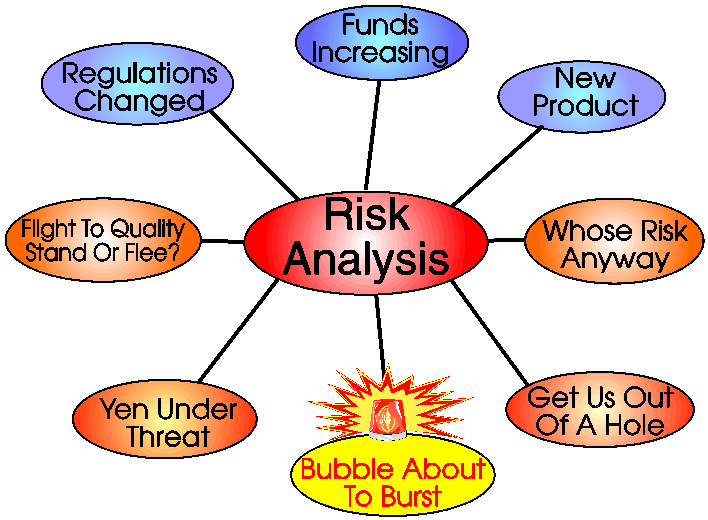
The CRM Risk Analysis System can provide accurate and timely
information, while allowing its portfolio model to be drastically changed to reflect new
goals, shifts in emphasis and other new constraints on the overall risk regime.
 The
currently available Risk Analysis tools are based around an algorithmic approach to risk
assessment. This was fine while products were simple - the algorithm was simple and
stable, and increasing the volume alone made no difference to the calculation. As products
have become increasingly complex, hooking into the bank's environment through sensitivity
to interest rate or FX rates, the algorithm operating on simple product data has been
increasingly poor at predicting the real risk regime for the bank.
The
currently available Risk Analysis tools are based around an algorithmic approach to risk
assessment. This was fine while products were simple - the algorithm was simple and
stable, and increasing the volume alone made no difference to the calculation. As products
have become increasingly complex, hooking into the bank's environment through sensitivity
to interest rate or FX rates, the algorithm operating on simple product data has been
increasingly poor at predicting the real risk regime for the bank. There
have been efforts to improve the operation of Risk Analysis, with special programs
attempting to break the restrictions of a cell-based, fixed topology approach, but the
special programs themselves are inflexible, not capable of any analysis outside of the
programmer’s original conception. Expert Systems have been built for the purpose,
attempting to capture the human analyst’s expertise in a rigid set of rules, only to
find that the human behaves non-algorithmically in complex analysis like this, so no
simplistic and directed set of rules is possible.
There
have been efforts to improve the operation of Risk Analysis, with special programs
attempting to break the restrictions of a cell-based, fixed topology approach, but the
special programs themselves are inflexible, not capable of any analysis outside of the
programmer’s original conception. Expert Systems have been built for the purpose,
attempting to capture the human analyst’s expertise in a rigid set of rules, only to
find that the human behaves non-algorithmically in complex analysis like this, so no
simplistic and directed set of rules is possible. The
basis of the risk analysis is the description of an instrument, with a potential start
time, possible limited holding time, risk allocation and funds usage. A significant
difference from the programmatic approach becomes apparent when values are specified for
these things. Ranges of values are used, and logical connections can be added between any
of the elements of the analysis. This allows the analysis to be simple where simplicity is
appropriate (we always hold 10% in Government Bonds), and complex where necessary to
describe the real situation (if we try to move the market alone...). The CRM analysis
extends to cover much more of the total risk analysis function, analysis that up to now
was done on paper or in people's heads. It is the greater coverage that allows better
information to be available from working on and developing the analysis.
The
basis of the risk analysis is the description of an instrument, with a potential start
time, possible limited holding time, risk allocation and funds usage. A significant
difference from the programmatic approach becomes apparent when values are specified for
these things. Ranges of values are used, and logical connections can be added between any
of the elements of the analysis. This allows the analysis to be simple where simplicity is
appropriate (we always hold 10% in Government Bonds), and complex where necessary to
describe the real situation (if we try to move the market alone...). The CRM analysis
extends to cover much more of the total risk analysis function, analysis that up to now
was done on paper or in people's heads. It is the greater coverage that allows better
information to be available from working on and developing the analysis. Some
Constraint Reasoning tools can only move from one consistent state to another. This would
be fairly useless for Risk Analysis, unless the analysis is never needed. As the analysis
rolls along, you will occasionally need to dig your institution out of a hole with changed
risk or market profiles, or other change inconsistent with what has gone before. ORION
will support the decision-making needed to determine what new state you should move to,
and then maintain Constraint Reasoning on that new state.
Some
Constraint Reasoning tools can only move from one consistent state to another. This would
be fairly useless for Risk Analysis, unless the analysis is never needed. As the analysis
rolls along, you will occasionally need to dig your institution out of a hole with changed
risk or market profiles, or other change inconsistent with what has gone before. ORION
will support the decision-making needed to determine what new state you should move to,
and then maintain Constraint Reasoning on that new state. The
user has several graphical interfaces available to work on the analysis, the main one
being a chart of the elements of the portfolio, coupled with plots of the various risk
exposures, from the lowest to the highest levels, together with portfolio limits. Behind
the plots is a knowledge network. It represents the complete logical structure of the
portfolio, incorporating all the elements, costs, risks, flows, constraints and
opportunities that are in the analysis. The network is carrying tentative information
through its connections, and the connections themselves can change as the tentative
information changes.
The
user has several graphical interfaces available to work on the analysis, the main one
being a chart of the elements of the portfolio, coupled with plots of the various risk
exposures, from the lowest to the highest levels, together with portfolio limits. Behind
the plots is a knowledge network. It represents the complete logical structure of the
portfolio, incorporating all the elements, costs, risks, flows, constraints and
opportunities that are in the analysis. The network is carrying tentative information
through its connections, and the connections themselves can change as the tentative
information changes.  The analytic model, continually updated by back office analysts to reflect the bank’s
environment, acts as a continuous check on front office activity, without the numbing
dullness of a pre-programmed risk limiting algorithm.
The analytic model, continually updated by back office analysts to reflect the bank’s
environment, acts as a continuous check on front office activity, without the numbing
dullness of a pre-programmed risk limiting algorithm.